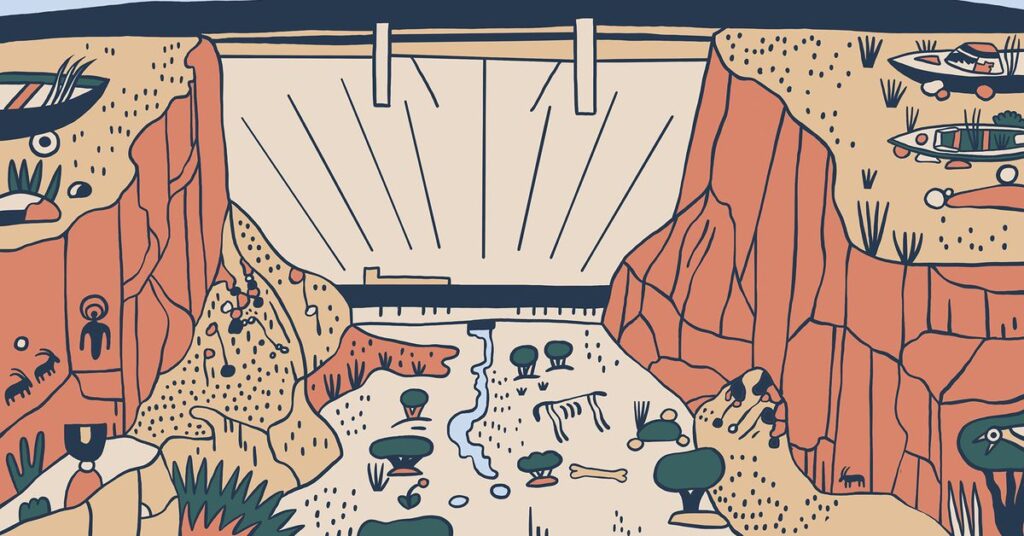Part of the issue The 100-year-old-mistake that’s reshaping the American West from The Highlight, Vox’s home for ambitious stories that explain our world.
The Colorado River provides water for irrigation, power generation, recreation, and habitats for endangered species. But the 40 million people who drink from this critical artery have watched it wither amid the region’s worst dry spell in more than 1,200 years.
This massive drought, sometimes called a megadrought, settled over the Western United States two decades ago, and precious precipitation has flowed and faded from year to year. But since 2020, the region has faced essentially a drought within a drought. In an already water-sparse region, this has led to some of the driest conditions the Western US has seen in memory.
“It’s kind of like the slowest-moving freight train that you know is going to hit you,” said Cynthia Campbell, water resources management adviser for the City of Phoenix. “At the same time, what we’ve seen in the last couple of years has been an enormous acceleration that frankly we didn’t expect.”
This year, the two largest reservoirs in the US, Lake Mead and Lake Powell, saw water levels dip to record lows. The falling waterline revealed relics and corpses previously lost for decades, leaving behind stark bathtub rings along the surrounding canyons. In turn, the Hoover Dam and the Glen Canyon Dam that impound these reservoirs saw their hydroelectric power production dwindle.
As electricity production dropped off, demand picked up as another heat wave scorched the West. To survive in the extreme heat that’s increasingly a fact of life, millions of people switched on fans and air conditioners,…
Read the full article here





